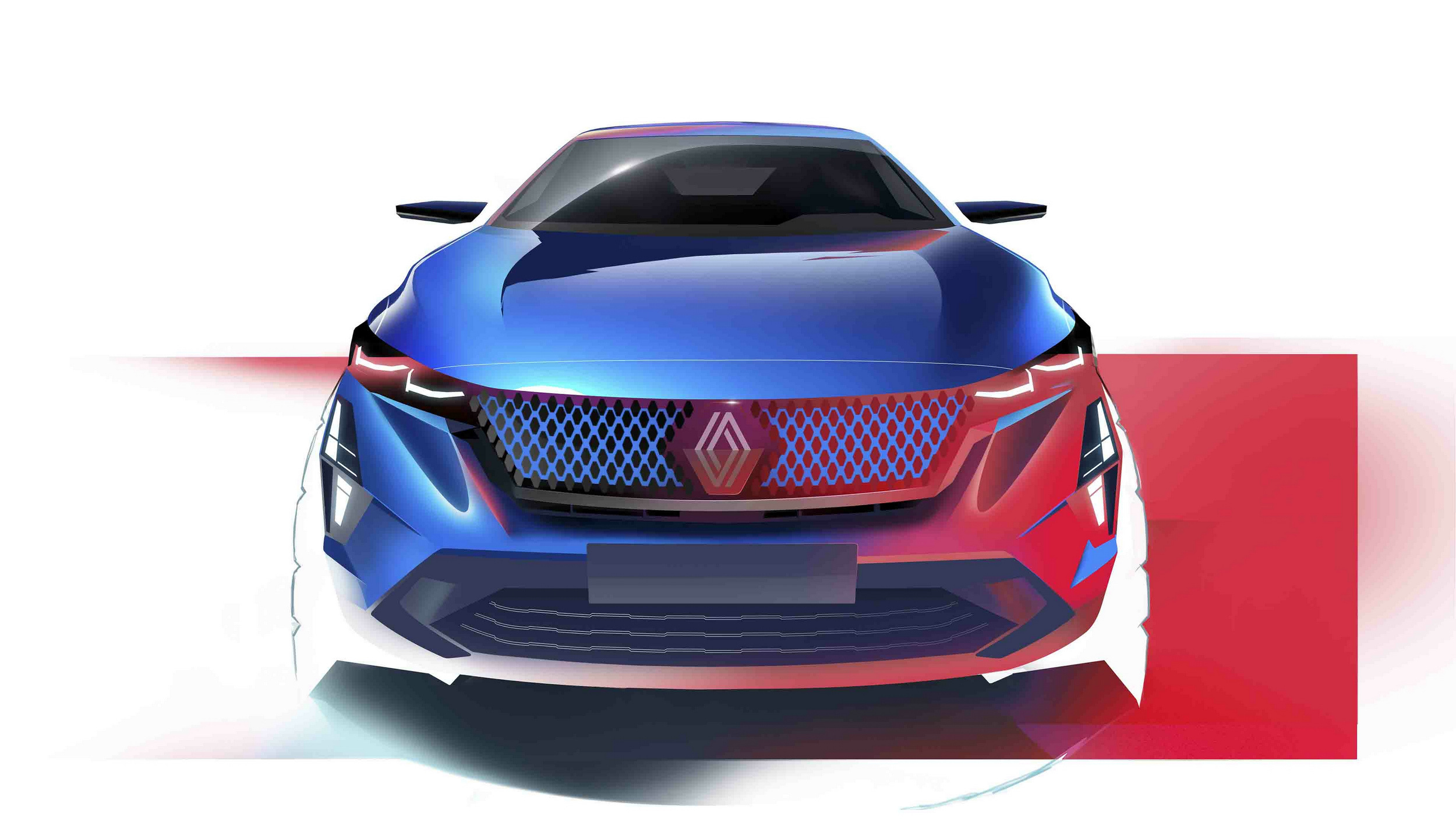The Renault Rafale made its world premiere today as a new halo car for the French brand. Inspired by the world of aviation, as evident in its name borrowed from a 1930s racing airplane and its debut at the Paris Air Show, the Rafale embodies the automaker’s latest design language and technology. The coupe-style SUV is mechanically related to the Austral and will only be offered with E-Tech hybrid powertrains.
Even though the Rafale shares the CMF-CD underpinnings with its counterparts, the Austral and Espace, it boasts a distinctive appearance with unique body panels. The model is positioned in the D-SUV segment (midsize) measuring 4.71 m (185.4 inches) long, 1.86 m (73.2 inches) wide, and 1.61 m (63.4 inches) tall with a wheelbase of 2.74 m (107.9 inches). This makes it only 12 mm (0.5 inches) shorter than the seven-seater Espace which has an identical wheelbase.
More: New Renault Espace Debuts As A Longer Austral SUV With Seven Seats
While the Scenic Vision concept and the facelifted Clio came before it, the Rafale marks Renault’s first production vehicle to fully embody their new visual language, overseen by Gilles Vidal, former design boss at Peugeot. The front end of the Rafale boasts arrow-shaped LED DRLs and Peugeot-style LED headlights. Positioned below the sleek nose, the grille incorporates an aerodynamically optimized pattern that echoes Renault’s diamond emblem, while efficiently directing airflow and concentrating cooling at the lower bumper intake.
The profile is less adventurous in comparison yet stylish, with toned-up fenders, sleek gloss black cladding, and sharp lines along the lower part of the door. The standout feature is undoubtedly the sloping roofline, which gives the coupe-SUV silhouette its distinctive look. The rear glass is precisely inclined at 17 degrees, a design choice that not only optimizes efficiency but also eliminates the need for rear wipers, epitomizing both form and function.
At the rear, the high-mounted Y-shaped LED taillights could belong to a Mitsubishi model (ideal for potential re-badging opportunities). There’s also an integrated spoiler on the tailgate alongside a prominent roof spoiler, and a sleek rear bumper that cleverly conceals the exhaust pipes, resulting in a clean and sophisticated appearance. The SUV rides on stylish 20-inch alloy wheels, adding to its overall presence. In terms of color options, the Rafale offers a range of choices, including the new White Pearl and Alpine Blue shades, along with the classic Flame Red, Diamond Black, and gloss Ceramic Grey.
A familiar interior with plenty of screens
Inside, the dashboard and OpenR digital cockpit are carried over from the Rafale’s closely related Austral and Espace siblings. This means that the coupe-SUV features a 12.3-inch digital instrument cluster alongside a 12-inch touchscreen for the infotainment and an available 9.3-inch head-up display. The sport seats of the Espirit Alpine trim are upholstered in Alcantara with tri-color stitching and feature illuminated Alpine emblems on the seatbacks. Renault also used dyed cork and slate for the dashboard inserts and clever ambient lighting which can automatically adapt to the time of day.
More: Renault’s Popular Captur Is About To Get Even Better
A very cool feature is the new Solarbay panoramic glass roof which offers the ability to darken or lighten up according to passenger preferences. Renault assures that despite the curved roofline, there is ample headroom for rear passengers, along with generous knee room facilitated by the long wheelbase. Regarding storage capacity, the Renault Rafale’s boot boasts a large volume of 647 liters (22.8 cubic feet), comparable to that of the five-seater version of the Espace.
Lastly, the Rafale is equipped with a comprehensive suite of Advanced Driver Assistance Systems (ADAS), which expands its Level 2 autonomy across various types of roads.
Hybrid and Plug-in Hybrid Powertrain Options
The Rafale is a hybrid-only affair, but as a proper flagship, it gets the automaker’s most efficient and powerful E-Tech powertrains. The entry-level model available at launch shares its self-charging hybrid system with the Austral and Espace. It combines a 129hp turbocharged 1.2-liter three-cylinder petrol engine with an electric motor, a high-voltage starter-generator, and a 2 kWh lithium-ion battery. The combined system output is 197 hp (147 kW / 200 PS) and 205 Nm (151.2 lb-ft) of torque, exclusively transmitted to the front axle through a smart “multimode automatic dog box”.
Later on, Renault will expand the range with a “high-performance E-Tech 4×4” plug-in hybrid model boasting a combined output of 296 hp (221 kW / 300 PS). The increase in power is achieved through an additional electric motor on the rear axle, enabling all-wheel drive and improving performance. While detailed specifications of the PHEV system were not been provided, Renault promises an ample range in zero-emission mode.
Renault says that the CMF-CD architecture has been tuned for driving pleasure, combining a multi-link rear axle with the upgraded “4Control Advanced” four-wheel steering system and a special calibration for the steering. Furthermore, the more powerful PHEV flagship will get additional chassis upgrades compared to the self-charging hybrid model.
When will it go on sale?
The Renault Rafale is scheduled to be available for sale across Europe and other select markets starting in spring 2024, featuring the self-charging hybrid E-Tech powertrain. Production will take place at the upgraded Palencia plant in Spain. Beyond mainstream rivals such as the Peugeot 408 and Citroen C5X fastbacks, the Rafale will also attempt to steal some buyers away from premium automakers, including the Mercedes-Benz GLC Coupe, BMW X4, and Audi Q5 Sportback.

























































































































